Belgium or the Netherlands? It’s a question many travelers ask when planning a trip to this corner of Europe. Both countries are small but packed with history, culture, and unforgettable experiences. As a Belgian travel guide, I’ve heard this question countless times. The truth is, there’s no wrong choice—but the right one depends on what you’re looking for. In this post, I’ll break down the key differences to help you decide. Let’s get to it.
This article contains affiliate links, which means we may earn a small commission at no extra cost to you if you make a purchase through these links.
1. Culture and History
Belgium and the Netherlands both have rich cultural backgrounds and historical significance, but they express it in very different ways.
Belgium
Belgium is a crossroads of European history. Walk through medieval cities like Bruges and Ghent, and you’ll feel like you’ve stepped back in time.
The architecture is stunning—think Gothic cathedrals, grand squares, and cobblestone streets. But it’s not just about pretty buildings. Belgium’s unique position between France, the Netherlands, and Germany has shaped its culture in fascinating ways. You’ll find French sophistication in Wallonia, Dutch influence in Flanders, and a blend of both in Brussels.
Art lovers, take note: Belgium has a rich artistic legacy. Flemish painters like Rubens, Bruegel, and Van Eyck made their mark here. Visit museums in Antwerp and Brussels to see their masterpieces up close. And let’s not forget the comic book culture—Tintin and The Smurfs were born here.

Netherlands
The Netherlands is all about contrast. It’s a place where Golden Age history meets modern innovation.
Cities like Amsterdam and Haarlem are steeped in maritime history, once ruling global trade during the Dutch Golden Age. You’ll see this legacy in the grand canals, merchant houses, and world-class museums.
The Dutch are known for their progressive mindset and laid-back lifestyle. This mix of tradition and modernity gives the Netherlands a unique cultural vibe.
Art is everywhere—from the timeless works of Rembrandt and Vermeer to the bold strokes of Van Gogh. In fact, the Van Gogh Museum and Rijksmuseum in Amsterdam are must-visits for any art enthusiast.
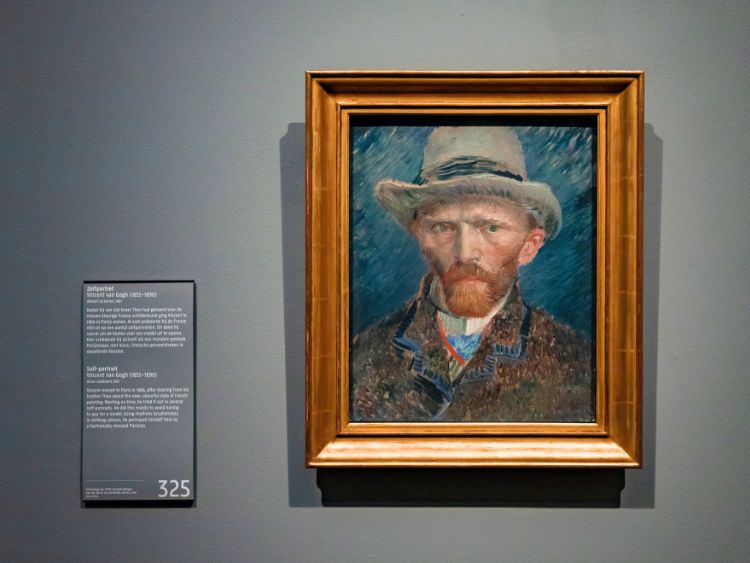
2. Cities and Attractions
Whether you’re looking for fairy-tale towns or vibrant modern cities, both Belgium and the Netherlands offer unforgettable experiences.
Belgium
Belgium may be small, but its cities pack a punch.
- Brussels – The capital of Europe, home to the stunning Grand Place, the quirky Manneken Pis, and some of the best chocolate shops in the world. The Atomium and the Magritte Museum add a modern and artistic touch.
- Bruges – A fairy-tale city with canals, medieval buildings, and an old-world atmosphere. Climb the Belfry for a panoramic view, or take a boat tour through the canals.
- Ghent – A hidden gem with a youthful vibe. Highlights include Gravensteen Castle, the vibrant Graslei harbor, and the breathtaking Adoration of the Mystic Lamb at St. Bavo’s Cathedral.
- Antwerp – A fashion and art hub, home to Rubens’ masterpieces and a lively nightlife scene. The Central Station is a sight in itself, and the riverside adds a relaxed touch.
Each Belgian city has its own personality, but all share one thing: history, charm, and incredible food.
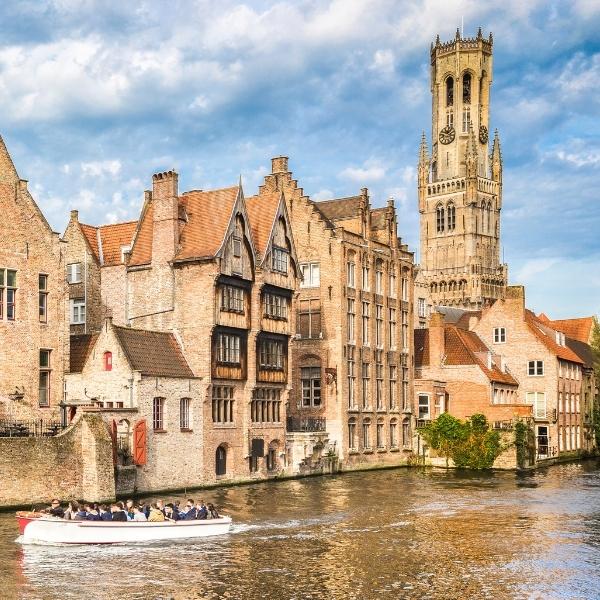
Netherlands
Dutch cities are dynamic and full of life, offering a mix of history and modernity.
- Amsterdam – The postcard-perfect canals, the Rijksmuseum, Anne Frank House, and the lively streets of Jordaan make it the ultimate Dutch experience. Whether you’re cycling through Vondelpark or exploring the Red Light District, there’s something for everyone.
- Rotterdam – The Netherlands’ modern face. A city rebuilt after WWII, now a hub of cutting-edge architecture, nightlife, and Europe’s biggest port. Don’t miss the Cube Houses and the Erasmus Bridge.
- Utrecht – A smaller, charming version of Amsterdam with canals, cafes, and a relaxed atmosphere. The Dom Tower offers the best views in the city.
- The Hague – The seat of the Dutch government and home to Mauritshuis, where you’ll find Vermeer’s Girl with a Pearl Earring. The city’s Scheveningen Beach is a great escape from urban life.
Belgium offers a medieval, fairy-tale experience, while the Netherlands blends history with a modern, energetic feel. Do you want to wander through centuries-old streets or explore a city with a contemporary edge? The choice is yours.

3. Food and Drink
Food plays a big role in both Belgian and Dutch cultures, but the culinary experiences are quite different.
Belgium
Belgium takes its food seriously, and it shows. This small country has a culinary reputation that rivals even its bigger neighbors.
- Chocolate – Belgian chocolate is world-renowned for a reason. In cities like Brussels, Bruges, and Antwerp, you’ll find artisanal chocolate shops on every corner. Try pralines from Pierre Marcolini, Neuhaus, or the quirky flavors at The Chocolate Line.
- Waffles – Not just any waffle. In Belgium, you have Liège waffles (sweet and caramelized) and Brussels waffles (light and crispy). Topped with whipped cream, chocolate, or fresh fruit, they’re a must-try street snack.
- Fries – Belgian fries are legendary. Double-fried for that perfect crispy exterior and fluffy interior, they’re served in a paper cone with a generous dollop of sauce on top. And let’s be clear—they’re Belgian, not French! Whether you prefer andalouse, samurai, or the classic mayonnaise, the sauces are just as important as the fries. Visit a traditional frituur (fry shop) to taste them the way locals do.
- Beer – Belgium is the beer capital of the world, boasting over 1,000 varieties. From Trappist brews made by monks to fruity lambics and strong ales like Duvel and Westvleteren, there’s a beer for every palate. Visit traditional brown cafés to sip like a local.
- Local Dishes – Indulge in moules-frites (mussels and fries), stoofvlees (Flemish beef stew), or waterzooi (a creamy chicken or fish stew). Belgian fries are often served as a side but can easily steal the show as a meal on their own.
Read more about Belgium’s food and drink culture.
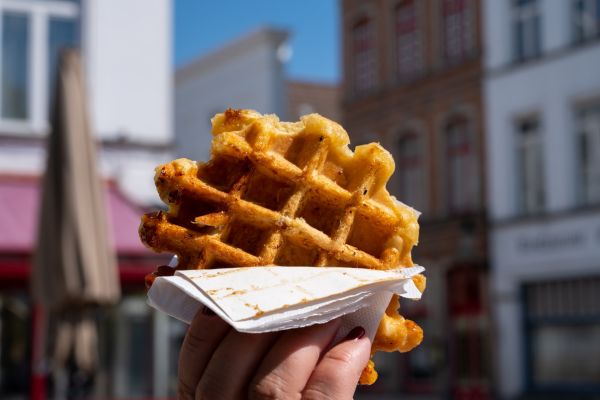
Netherlands
Dutch food is comfort food—simple, hearty, and delicious. While it doesn’t have the same global reputation as Belgian cuisine, it has its own charm.
- Cheese – The Dutch are masters of cheese. Visit local markets to taste Gouda, Edam, and the aged, nutty Old Amsterdam. The Alkmaar Cheese Market is a fun cultural experience.
- Snacks and Street Food – Try stroopwafels (thin waffles with caramel syrup), bitterballen (deep-fried meatballs), and poffertjes (mini fluffy pancakes). The Dutch love their snacks, especially with a beer at a local bar.
- Herring – Not for the faint-hearted, but haring (raw herring served with onions and pickles) is a Dutch tradition. Eat it the local way: by holding it by the tail and letting it slide into your mouth.
- Pannenkoeken – Dutch pancakes are larger and thinner than American ones but thicker than crêpes. They come with both sweet and savory toppings, making them great for any meal.
- Beer and Jenever – The Netherlands is known for its beers like Heineken and Amstel, but also for jenever, the precursor to gin. Visit a proeflokaal (tasting house) in Amsterdam or Rotterdam for a sip.

4. Nature and Outdoor Activities
Both countries have beautiful landscapes and outdoor activities, but their natural scenery couldn’t be more different.
Belgium
Belgium may not have towering peaks or expansive national parks, but it more than makes up for it with its varied landscapes, picturesque countryside, and lush forests.
- The Ardennes – This is Belgium’s green jewel. Located in the south, the Ardennes is a region of rolling hills, dense forests, and winding rivers. It’s a paradise for hikers, cyclists, and adventure seekers. You can go kayaking on the Lesse River or explore charming villages like Durbuy, the “smallest city in the world,” and La Roche-en-Ardenne with its medieval castle ruins. If you’re looking for peace and nature, this is the place to be.
- The Belgian Coast – Belgium’s coastline may be short (67 km), but it’s packed with sandy beaches and vibrant seaside towns. Ostend is perfect for a lively beach vibe, while Knokke is more upscale, with chic boutiques and art galleries. Blankenberge is great for families, with a long boardwalk and plenty of activities. Whether you’re after sunbathing, seafood, or coastal walks, the Belgian coast delivers.
- Hoge Kempen National Park – Belgium’s only national park, located in Limburg, offers a unique mix of heathlands, pine forests, and lakes. It’s ideal for hiking, cycling, and even horseback riding. The park is dotted with panoramic viewpoints, giving you a glimpse of Belgium’s natural beauty.
- Sonian Forest – Just outside Brussels, this UNESCO-listed beech forest is a serene escape from city life. It’s perfect for walking, cycling, or simply enjoying the peaceful atmosphere among centuries-old trees.
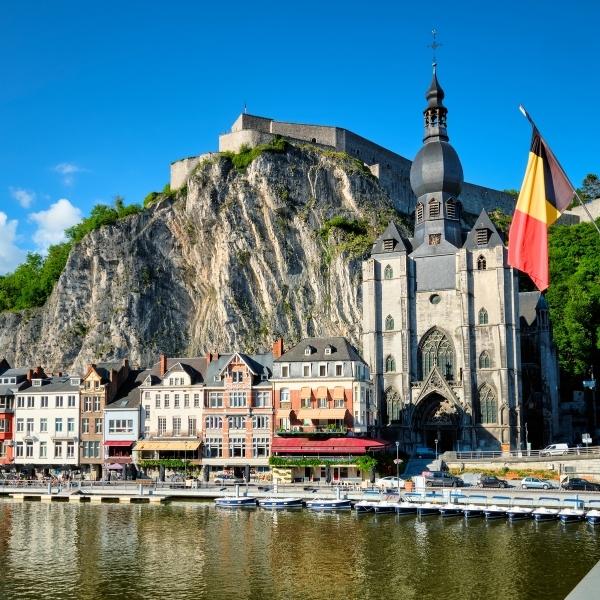
Netherlands
The Netherlands is known for its flat landscapes, making it a cyclist’s paradise. It offers a blend of colorful tulip fields, scenic coastlines, and unique natural reserves.
- Tulip Fields & Keukenhof – The Netherlands is famous for its tulips, and nowhere showcases them better than Keukenhof Gardens near Amsterdam. From March to May, the fields explode with color, drawing visitors from all over the world. Drive or cycle through the Bollenstreek region for iconic views of endless tulip rows.
- National Parks – The Netherlands has over 20 national parks. De Hoge Veluwe is the most famous, known for its woodlands, heathlands, and sand dunes. It’s also home to the Kröller-Müller Museum, which houses an impressive Van Gogh collection. Rent one of the park’s free white bicycles to explore its vast landscapes.
- Wadden Sea & Frisian Islands – This UNESCO World Heritage Site along the northern coast is a unique tidal region perfect for mudflat hiking and seal spotting. Island hopping between Texel, Vlieland, and Terschelling is a popular activity, offering sandy beaches, dunes, and charming villages.
- Canals & Waterways – Water is a defining feature of the Dutch landscape. Rent a boat in Giethoorn, a village known as the “Dutch Venice” for its picturesque canals. Alternatively, explore the famous canals of Amsterdam, Utrecht, or Leiden for a quintessential Dutch experience.

5. Language and Communication
Language can shape travel experiences, and Belgium and the Netherlands handle communication in very different ways.
Belgium
Belgium is a multilingual puzzle, which adds to its charm but can also be a bit confusing for first-time visitors.
- Three Official Languages – Dutch (Flemish) in Flanders, French in Wallonia, and a small German-speaking community in the east. In Brussels, you’ll hear both Dutch and French.
- Language Divide – The language line between Flanders and Wallonia is more than just geographical—it’s cultural. In the north, everything is in Dutch, while the south is fully French-speaking. This also influences the way locals see themselves.
- English Proficiency – Belgians are generally good at languages, especially in tourist areas. In Flanders and Brussels, most people speak English quite well, while in Wallonia, it’s a bit less common but manageable.
Netherlands
The Dutch have a reputation for being multilingual, and it’s well-deserved.
- Dutch Everywhere – Dutch is the official and dominant language throughout the country, but don’t worry—almost everyone speaks English.
- English Proficiency – The Netherlands consistently ranks among the highest in the world for English proficiency. In cities like Amsterdam, Rotterdam, and The Hague, you can easily get by without speaking a word of Dutch.
- Informal and Direct Communication – The Dutch are known for their directness and informal communication style. This can be refreshing, but it might come off as blunt to some visitors.
6. Cost and Accessibility
Your budget and travel style can be a big factor in deciding where to go, and Belgium and the Netherlands offer different experiences in terms of cost and convenience.
Belgium
Belgium offers a good balance between affordability and convenience, especially outside the capital.
- Accommodation & Dining – While Brussels and Bruges can be pricey, smaller cities like Ghent and Antwerp tend to be more affordable. Food and drinks are generally well-priced, with beer and fries being some of the best-value treats you can get. If you stay outside the main tourist areas, you’ll find great meals at reasonable prices.
- Public Transport – Belgium has an efficient train network that connects major cities and even smaller towns. The SNCB (NMBS) trains make it easy to hop between Brussels, Bruges, Ghent, and Antwerp in under an hour. Buses and trams are well-organized, especially in Flanders.
- Compact Size – Belgium is small, meaning you can explore multiple cities in just a few days. A weekend trip can easily cover Brussels, Bruges, and Ghent without spending too much time in transit.

Netherlands
The Netherlands is well-organized but can be expensive, especially in Amsterdam.
- Accommodation & Dining – Amsterdam is known for its high hotel prices, especially in the city center. However, there are budget options like hostels, Airbnb, and hotels in nearby cities (e.g., Haarlem or Utrecht). Dining out can also be pricey, but local markets and fast-food staples like herring and fries offer affordable alternatives.
- Public Transport – The Dutch NS train system is fast and reliable, connecting major cities with frequent departures. Amsterdam’s public transport (trams, metros, and buses) is efficient, but tickets can add up if you’re traveling a lot.
- Cycling Culture – The Netherlands is the best country in the world for cycling. Renting a bike is one of the cheapest and most efficient ways to get around, whether in Amsterdam, Utrecht, or Rotterdam. The infrastructure is top-notch, with dedicated bike lanes almost everywhere.

7. Travel Experience and Atmosphere
The overall vibe and travel experience can make or break a trip, and Belgium and the Netherlands offer contrasting atmospheres.
Belgium
Belgium is all about charm and tradition. It has a cozy, laid-back vibe that invites you to slow down and soak in the atmosphere.
- Quaint and Relaxed – In Belgium, time seems to move a bit slower. Cities like Bruges and Ghent feel like stepping into a fairy tale, with cobblestone streets, medieval architecture, and quiet canals. Even in bustling Brussels, there’s a relaxed pace compared to other European capitals. People enjoy long meals, leisurely walks, and cozy café terraces.
- Historical Charm – Belgium wears its history on its sleeve. From Bruges’ medieval charm to Antwerp’s Renaissance grandeur, you’ll find beautiful buildings and historical landmarks around every corner. It’s a place where tradition is preserved, and the past feels close.
- Nightlife and Social Scene – Nightlife in Belgium is more about good company and great beer than wild parties. Think cozy brown cafés, atmospheric jazz bars, and beer tasting rooms. In cities like Brussels and Antwerp, you’ll find trendy cocktail bars and live music venues, but the overall vibe is relaxed and intimate. If you prefer traditional pubs over noisy clubs, Belgium is your place.

Netherlands
The Netherlands has a vibrant, cosmopolitan atmosphere that feels lively and modern.
- Dynamic and Cosmopolitan – The Dutch are known for their open-mindedness and progressive outlook. This creates a dynamic, inclusive, and welcoming atmosphere, especially in Amsterdam, Rotterdam, and Utrecht. The cities are bustling with energy, full of cultural events, festivals, and creative spaces.
- Modern Meets Historic – Dutch cities beautifully blend old and new. In Amsterdam, 17th-century canals coexist with contemporary art galleries and innovative architecture. Rotterdam takes it to another level with its futuristic skyline, while still preserving its maritime history.
- Nightlife and Culture – The Netherlands has a vibrant nightlife, especially in Amsterdam and Rotterdam. From electronic music clubs to sophisticated cocktail bars, you’ll find something for every taste. The liberal culture is also evident in the coffeeshops, Red Light District, and the open, accepting attitude towards different lifestyles. If you’re looking for dynamic nightlife, street art, and a youthful vibe, the Netherlands has you covered.

8. Visiting Both: The Best of Belgium and the Netherlands
If you can’t choose between Belgium and the Netherlands, why not visit both? They’re so close that combining them in one trip is easy and rewarding. Plus, finding affordable international tickets is simple with Omio, a great platform for comparing and booking train, bus, and flight tickets.
By Train: The Fastest & Most Comfortable Option
Belgium and the Netherlands have excellent rail networks, and international trains make travel between the two effortless.
- Thalys & Eurostar – These high-speed trains connect Brussels, Antwerp, Rotterdam, and Amsterdam in just a couple of hours. The trip between Brussels and Amsterdam takes under two hours. Tickets can be pricey if booked last-minute, so it’s best to book in advance for the best fares.
- Intercity (IC) Train – If you’re on a budget, the regular IC train is a great alternative. It runs between Brussels and Amsterdam with stops in Antwerp, Rotterdam, and The Hague, taking around three hours. Tickets are more flexible, and you don’t need a seat reservation.
You can easily compare prices and schedules using Omio to find the best deals on routes between Brussels, Antwerp, Rotterdam, and Amsterdam.
By Bus: The Budget-Friendly Alternative
If you’re looking for a cheap way to travel between Belgium and the Netherlands, long-distance buses are a great option.
- FlixBus & BlaBlaCar Bus – These budget-friendly buses connect major cities like Brussels, Antwerp, Rotterdam, and Amsterdam. The journey takes about 2.5 to 4 hours, depending on the route. While slower than the train, it’s usually the cheapest option, with tickets starting as low as €10-€15 if booked in advance.
By Organized Tour: A Hassle-Free Day Trip Option
If you’re short on time and want to see the highlights of both countries, organized tours can be a great solution.
- Amsterdam to Bruges or Brussels – Many companies offer day trips from Amsterdam to Bruges or Brussels by bus. These tours include transport, a guided city walk, and free time to explore. They are perfect for travelers who want to visit Belgium without staying overnight.
- Brussels to Amsterdam – Similar tours run in the opposite direction, with day trips from Brussels to Amsterdam, often including stops in Rotterdam, The Hague, or Giethoorn along the way.
By Car: The Flexible Road Trip Option
Renting a car gives you the freedom to explore at your own pace, stopping in smaller towns and countryside spots along the way. The drive between Brussels and Amsterdam takes about two hours, making it an easy journey. Just keep in mind that parking in major cities can be expensive and challenging.
How to Plan It?
- Short Trip (3-5 Days): Base yourself in one country and take a day trip to the other (e.g., stay in Amsterdam and visit Bruges or stay in Brussels and visit Rotterdam).
- One Week: Spend 3-4 days in Belgium (Brussels, Bruges, Ghent) and 3-4 days in the Netherlands (Amsterdam, Rotterdam, The Hague).
- Longer Trip (10+ Days): Combine major cities with hidden gems, countryside, and coastal areas for a full experience.


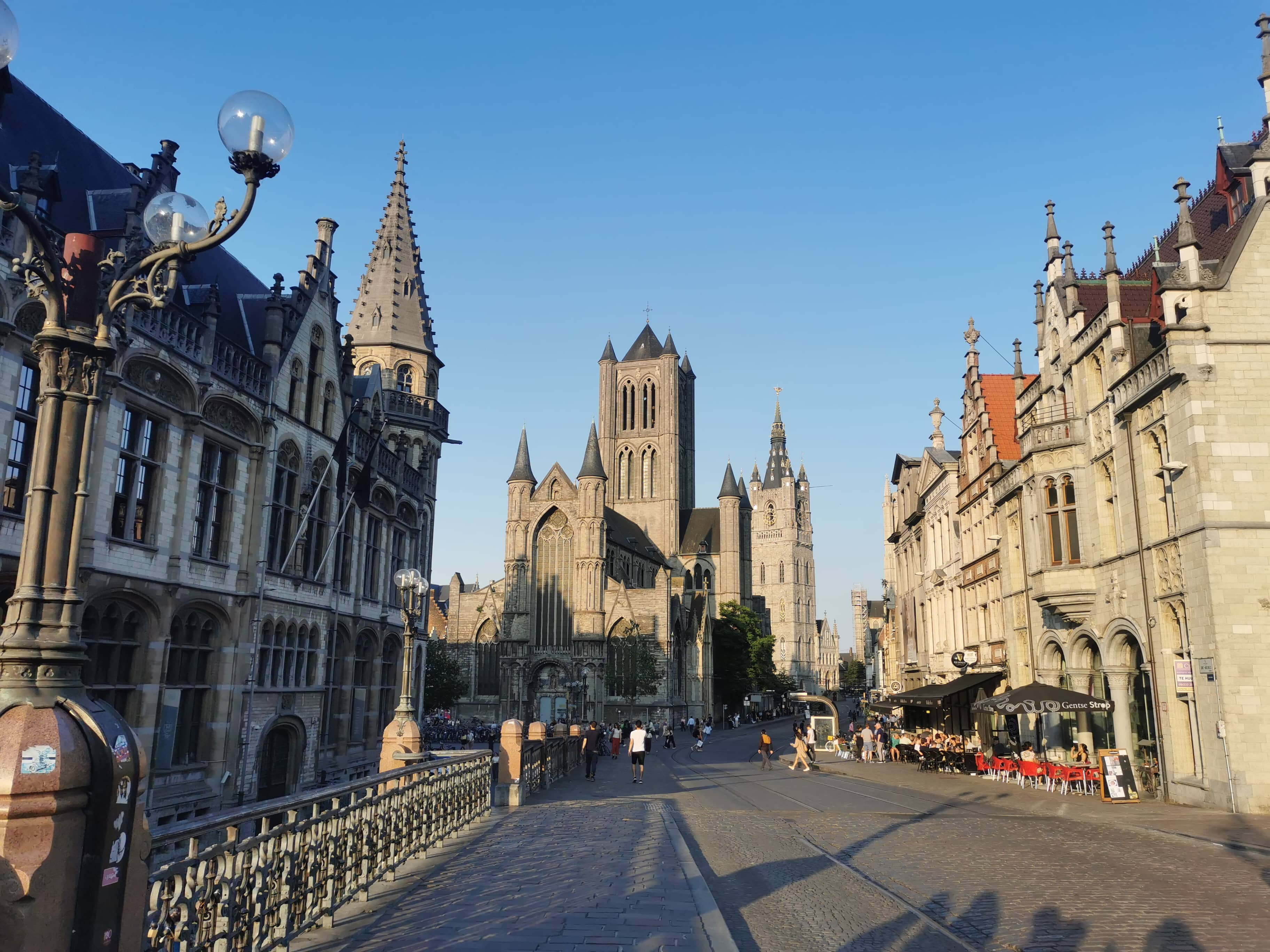
Belgium or the Netherlands – Which is Best to Visit?
Belgium and the Netherlands may be neighbors, but they offer distinctly different experiences. If you’re drawn to medieval charm, world-class chocolate, and cozy cafés, Belgium’s historical cities and relaxed vibe are hard to beat. From the cobblestone streets of Bruges to the art-filled alleys of Ghent, it’s a place where history and tradition come alive.
On the other hand, if you’re looking for a vibrant, cosmopolitan atmosphere, cutting-edge design, and an energetic nightlife, the Netherlands is the place to be. Wander through the canals of Amsterdam, cycle through the tulip fields, and explore the modern architecture of Rotterdam for a taste of Dutch innovation and creativity.
Can’t decide? Why not visit both? With excellent train connections, budget-friendly FlixBus routes, and even guided tours, you can easily experience the best of both worlds. In just a few hours, you can travel from Brussels’ medieval grandeur to Amsterdam’s buzzing streets.
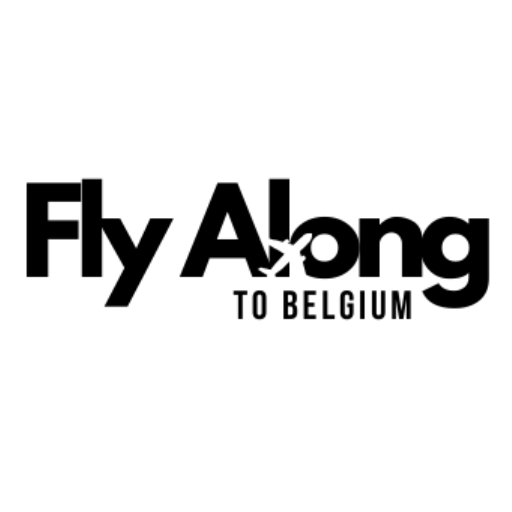



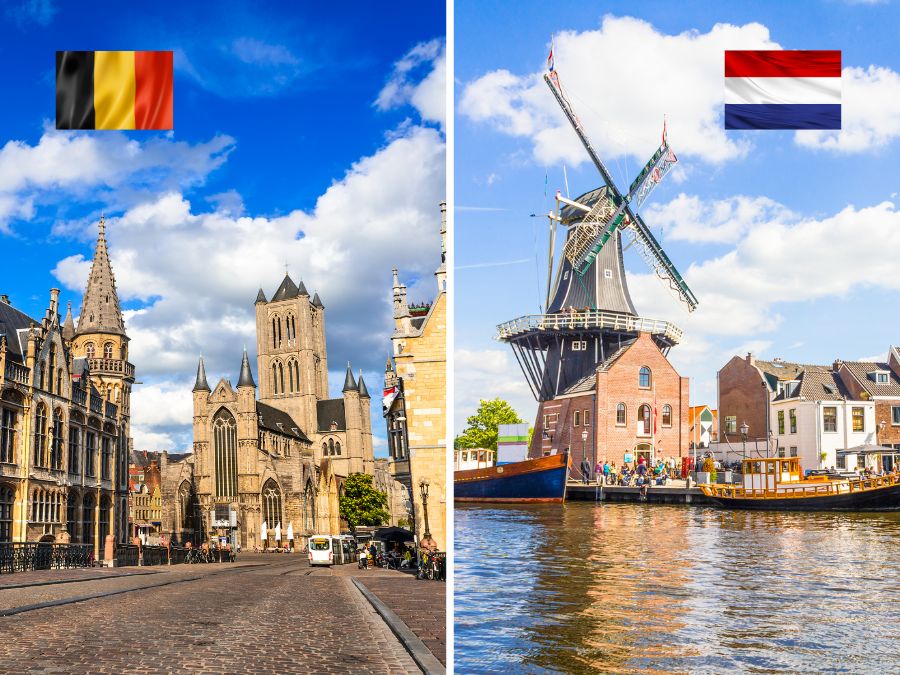

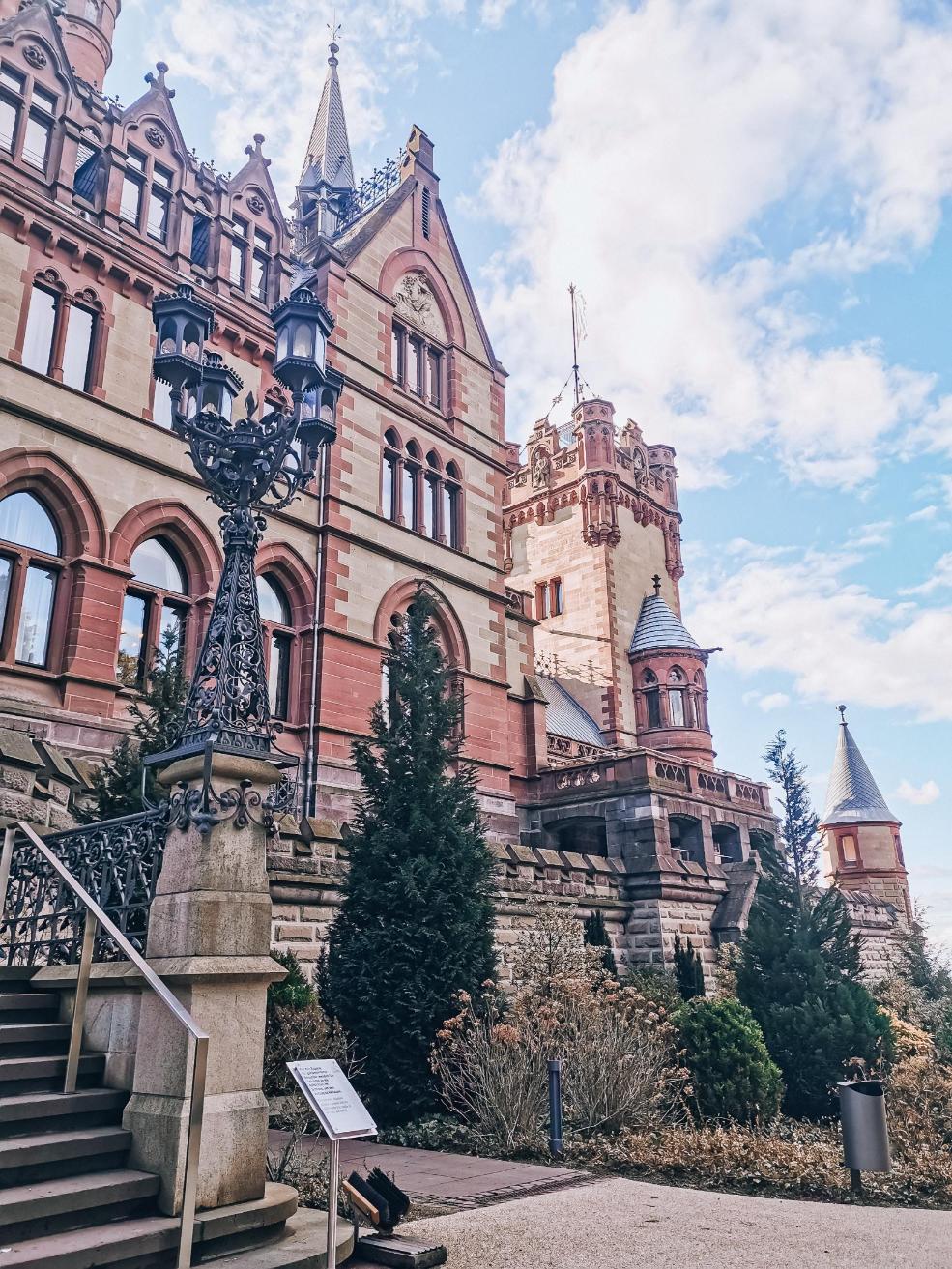
0 reacties